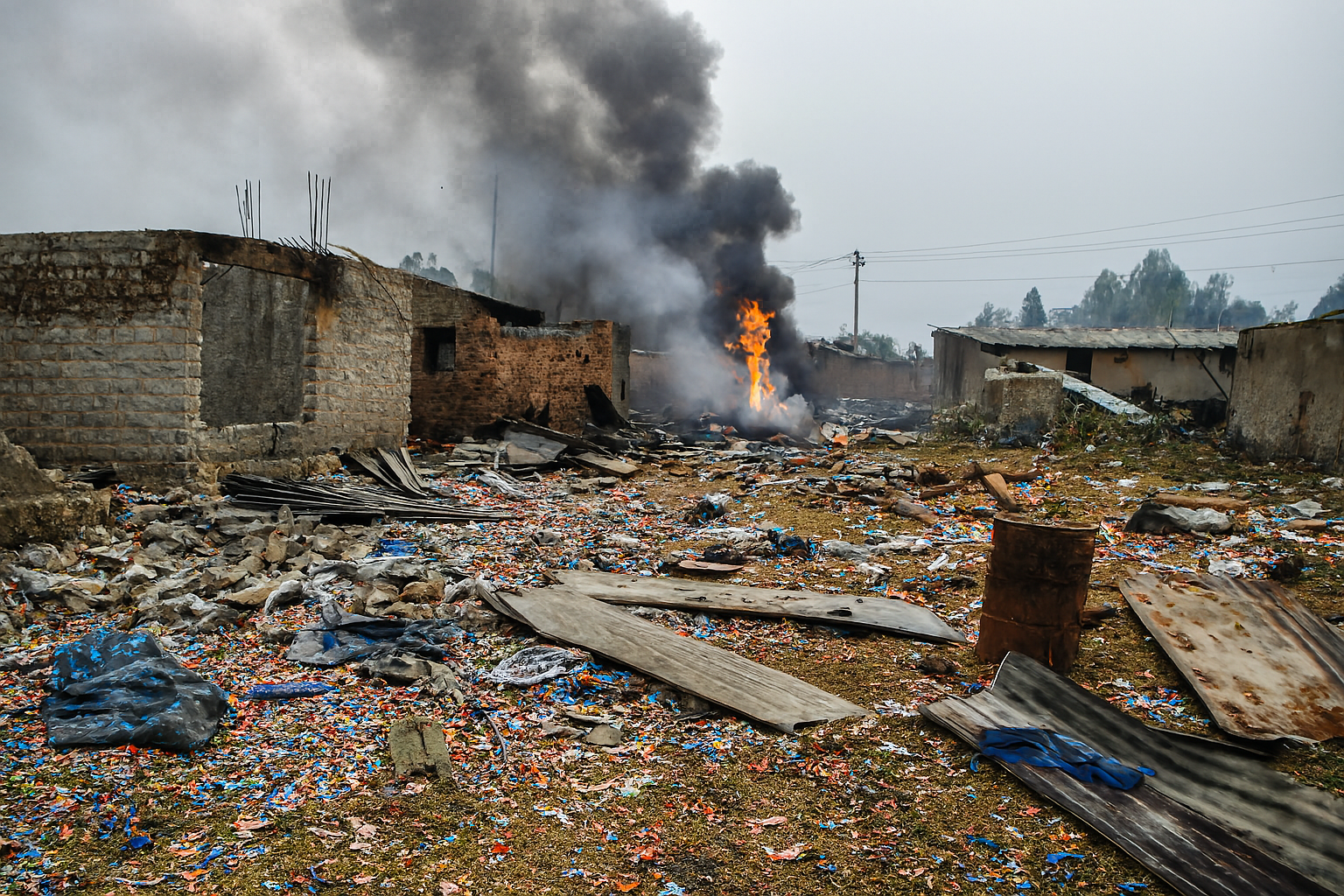The Konaseema firecracker unit blast in Andhra Pradesh, killing 8, exposes critical gaps in safety audits and protocol enforcement. Learn about PESO rules and why India’s explosive industries remain at risk.
Another year, another tragic blast in a firecracker unit just before Deepavali. The explosion in V. Savaram village in Andhra Pradesh’s Konaseema district, which claimed eight lives, is a devastating but familiar story. This incident forces a painful question: how many more lives will be lost before India consistently implements the safety protocols already in place for its explosive industries?
A Tragedy Foretold: Audits and Alarms That Never Went Off
What makes the Konaseema blast particularly alarming is that it wasn’t an unregulated, illegal unit. It was one of 18 licensed units in the district that had undergone a safety audit just a month before the tragedy.
- No major anomalies were reported.
- No red flags were raised.
The blast proves that the audit was a catastrophic failure—a mere formality that failed to identify the lethal risks present. The fact that authorities struggled to identify the victims further points to shockingly poor record-keeping and on-site management.
The Root Cause: A Cascade of Safety Failures
Initial reports suggest an electrical fire triggered the explosion. This points to a direct and severe violation of the elaborate safety protocols mandated by the Petroleum and Explosives Safety Organization (PESO), the national nodal agency for licensing such units.
PESO’s rules are designed to create multiple layers of defense against such accidents. The Konaseema unit violated several core principles:
- Controlling Ignition Sources: Cracker units are filled with combustible materials (fuel). Therefore, sources of fire must be completely absent. Intrinsically safe electrical equipment and switchboards are non-negotiable.
- Spatial Segregation: Even if a fire starts, it should not be able to spread to areas where explosive chemicals are stored or handled.
- Automation and Human Safety: A key PESO protocol often requires that certain electrical equipment can only be operated when no workers are present, minimizing human exposure to the gravest risks.
The explosion is a clear indicator that these protocols were either absent or ignored on the ground.
The Bigger Picture: A Nationwide Problem of Scrutiny
While Tamil Nadu has a large, established firecracker industry, smaller seasonal units in other states like Andhra Pradesh often operate under the radar. Awareness and scrutiny levels are not always high, making them potential hotspots for disaster.
Furthermore, the location of the Konaseema unit in the Godavari basin—a region with extensive oil and gas drilling and pipelines—adds a terrifying dimension. A major fire in such an area could have cascading, catastrophic consequences far beyond the factory itself.
The Way Forward: Implementation, Not Just Regulation
The solution is not new laws, but the rigorous enforcement of existing ones. The Konaseema blast is a stark warning that India must:
- Transform Safety Audits: Move beyond box-ticking exercises to rigorous, unannounced inspections by qualified experts who are held accountable.
- Enforce PESO Protocols Scrupulously: There can be no compromise on electrical safety, chemical storage, and operational procedures. Violations must lead to immediate license revocation and penal consequences.
- Improve Oversight in Low-Scrutiny Regions: States with seasonal firecracker industries need enhanced monitoring and support to ensure they meet the same safety standards as major hubs.
The Bottom Line
The eight lives lost in Konaseema are a price paid for institutional complacency. We have the rulebooks and the protocols; what we lack is the consistent will to implement them. Until safety is prioritized over seasonal profit and procedural formality, the weeks leading up to Deepavali will continue to be punctuated by such preventable tragedies.
Note The Hindu Editorial
